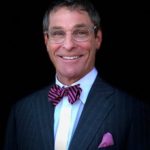
Regardless of whether someone is considering a rhinoplasty to improve the appearance of their nose or to improve their nasal breathing, common fears center around the risks of the procedure. Generally speaking, there are two main categories of risks involved with rhinoplasty.
Medical Risks With Rhinoplasty
The first category involves medical risks. Nasal bleeding is possible after rhinoplasty. If this occurs, it is typically successfully managed at home with a nasal spray. Rarely it could require returning to the office for some packing, but seldom is it a significant issue. Infection is also possible after rhinoplasty, and this is managed by timely diagnosis and initiation of a short course of antibiotics. Perhaps more serious is the possibility of impaired nasal breathing after rhinoplasty. Most people have short-term nasal congestion after rhinoplasty due to postoperative swelling. However long-term nasal congestion can occur if too much of the structure of the nose is excised during the procedure. This complication is best managed with prevention in the form of good surgical technique, because essentially the only effective treatment of this complication is a revision surgery. And finally, there are always anesthesia risks. Most rhinoplasty surgery is performed under general anesthesia, which is overall very safe with today’s technology. However in someone with general medical problems, it would be safest to get clearance from their primary care physician, cardiologist, or pulmonologist, prior to undergoing general anesthesia.
Avoiding A Bad Nose Job
The second category involves the risk of a poor outcome. As a patient, getting a good rhinoplasty result depends on several factors, some of which are controllable and others are not. One of the most important factors is finding an experienced rhinoplasty surgeon. This may be a difficult thing to find, but if you’re considering nasal surgery, it is a good investment to find an experienced surgeon, even if that entails some travel. It is also important that the surgeon shares your goals and your artistic vision. Every surgeon has their own philosophy of rhinoplasty and their own vision of the perfect nose, and if these ideals do not align with your own then unhappiness may result. An uncontrollable factor is wound healing. Each person’s body has a unique biology, and everyone will heal slightly differently. Even the most well executed surgery may heal poorly for reasons that are unclear. All of these factors, when taken together, result in a national average revision rhinoplasty rate around 10%.
Risks In Teenage Rhinoplasty
If a teenager is contemplating rhinoplasty, there is an additional risk to consider. The nasal bones and cartilages continue to grow during adolescence, and surgery may disrupt this growth, resulting in facial disharmony. Therefore it is generally ideal to postpone surgery until the patient stops growing, and nasal surgery is generally avoided until approximately sixteen years of age.
No surgery is risk free, but by understanding the risks and stacking the deck in your favor by finding an experienced surgeon, you can feel confident that you’ve done your best to ensure the best possible result. Ultimately, the vast majority of our patients who undergo rhinoplasty do very well and are happy with the positive impact of surgery on their life.
